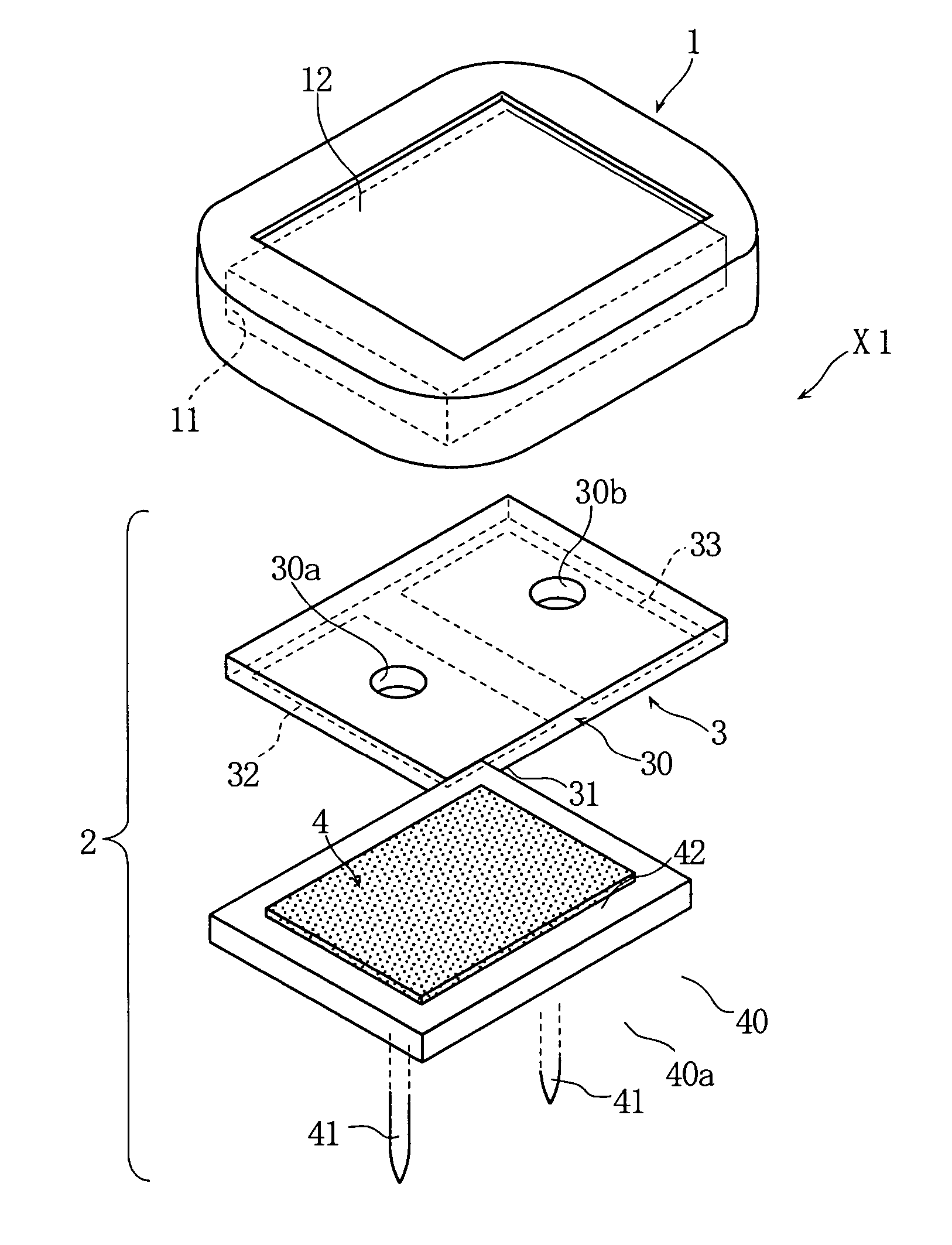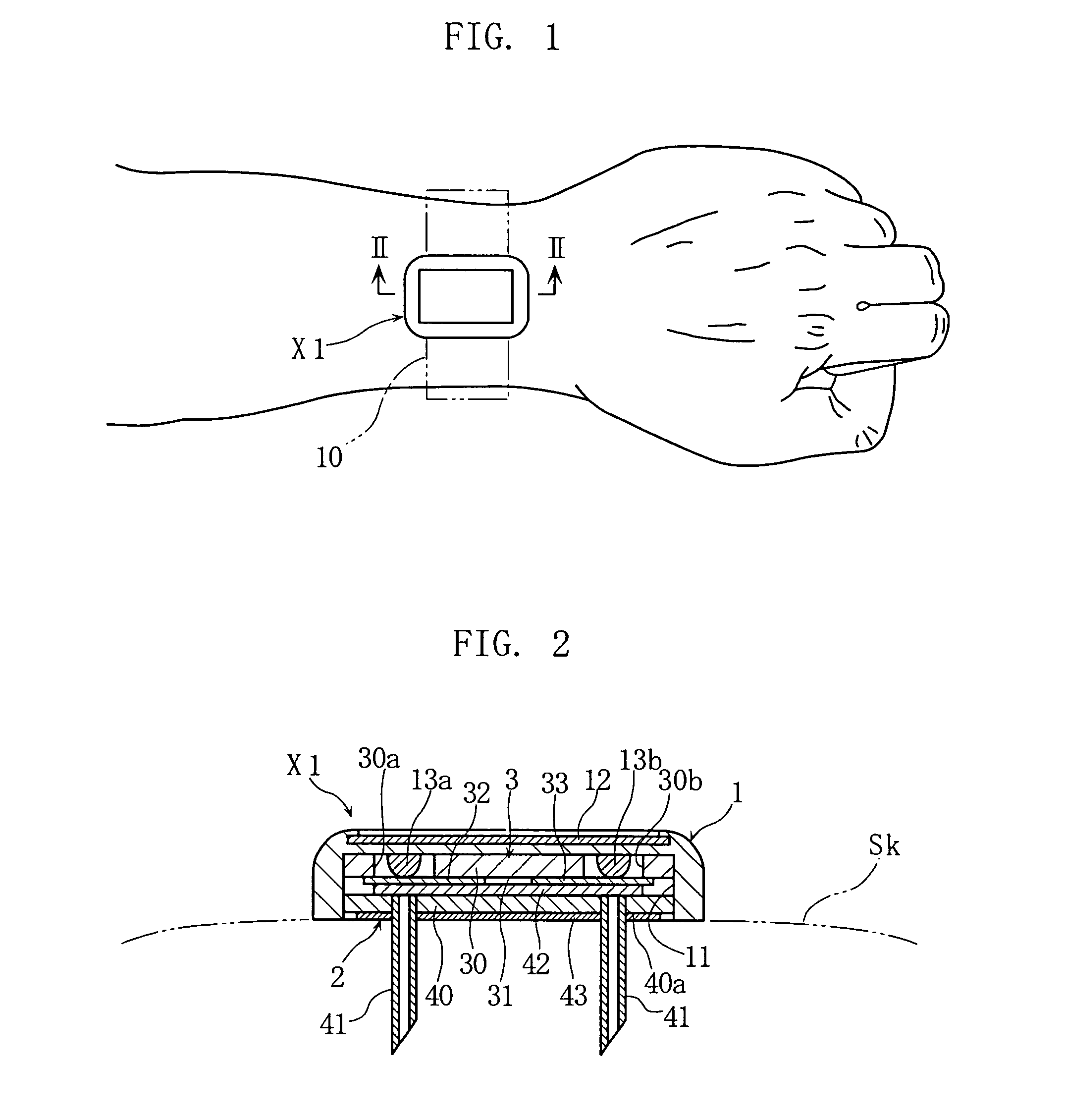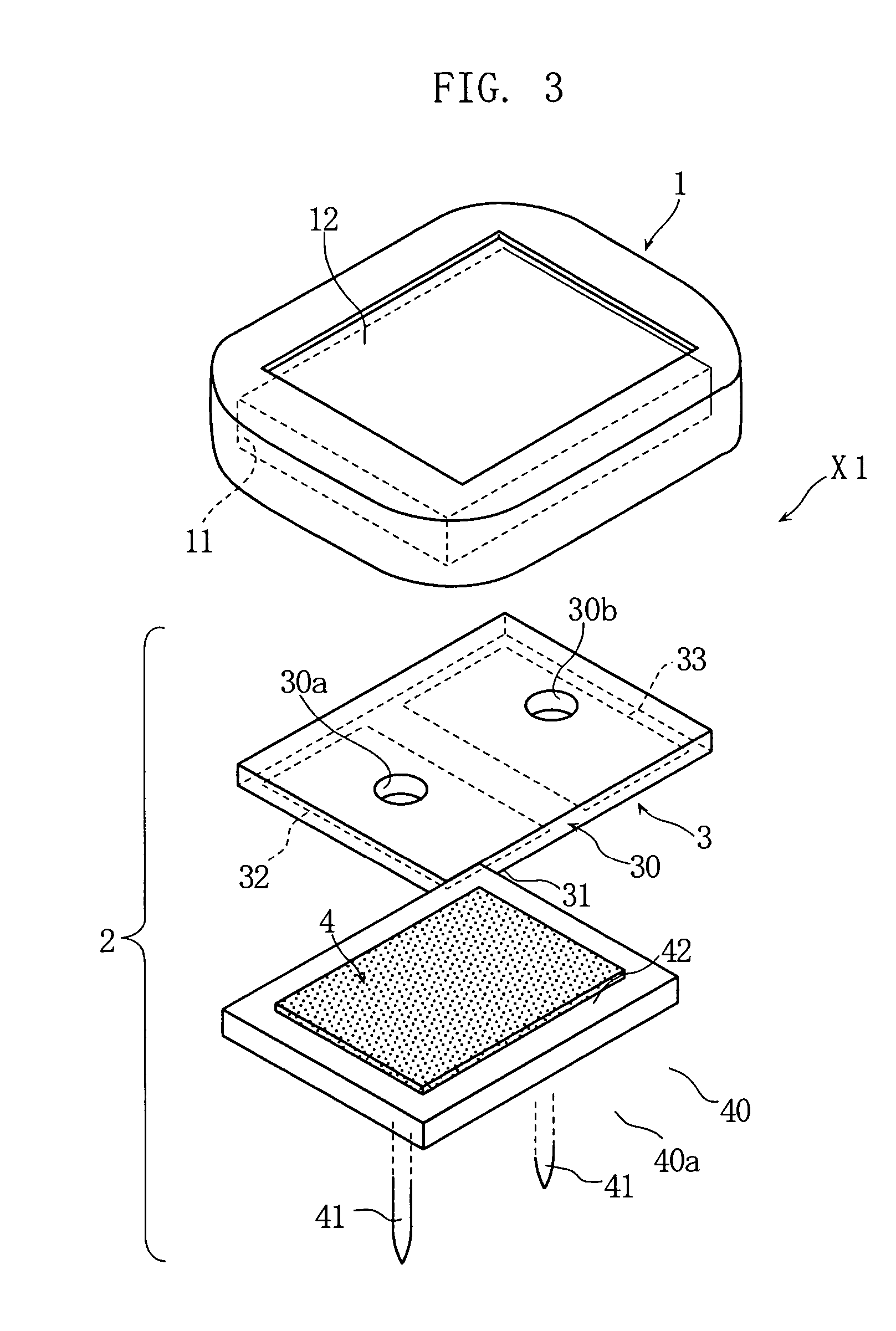Glucose sensor and glucose level measuring apparatus
a glucose level and measuring device technology, applied in the field of glucose level monitoring and glucose level measuring apparatus, can solve the problems of troublesome monitoring of glucose level, disadvantageous cost of adding electron mediator to the electrode, and deteriorating measurement accuracy, so as to achieve cost advantage
- Summary
- Abstract
- Description
- Claims
- Application Information
AI Technical Summary
Benefits of technology
Problems solved by technology
Method used
Image
Examples
example 1
[0062] In this example, the response characteristics of enzyme electrodes were examined using a batch reaction vessel.
[0063] The enzyme electrodes had a structure in which an enzyme and carbon powder were immobilized within a plastic tube (diameter 5 mm, length 30 mm). The immobilization of the enzyme and the carbon powder was performed by loading a mixture of the enzyme and the carbon paste (20 mg) into a plastic tube and then impregnating 100 mM of sodium phosphate buffer solution (pH 7.0) including 1% of glutaraldehyde as a cross-linking agent into the plastic tube. An excess of aldehyde groups in the cross-linking agent was inactivated by treating in 10 mM of Tris-HCl for 20 minutes. The enzyme electrode was equilibrated, before use, by immersing in 100 mM of sodium phosphate buffer solution (pH 7.0). As the enzyme, use was made of CyGDH (92.1 U / mg) comprising an α subunit (catalytic activity subunit) originating from the KS1 strain, a β subunit (electron mediator subunit) and ...
example 2
[0066] In this example, the influence of the voltage application on the response characteristics of an enzyme electrode was examined using a batch reaction vessel. The enzyme electrode was prepared in a similar manner to Example 1. As the enzyme, however, CyGDH with a specific activity of 56.5 U / mg was used. The content of the enzyme in the enzyme electrode was set to the amount corresponding to 50 U. The response characteristics were examined based on the response current measured with respect to each of the cases where the voltage of +400 mV was applied and where the voltage of +250 mV was applied while maintaining the glucose solutions of the intended concentrations at 37° C. The concentrations of the glucose solutions were 0 mM, 0.5 mM, 1.0 mM, 1.5 mM, 2.0 mM, 2.5 mM, 8 mM, 12 mM, 21 mM and 47 mM, respectively. The measurements of the response current are shown in FIG. 9.
[0067] As is clear from FIG. 9, although the response current in the case where the applied voltage is +250 ...
example 3
[0068] In this example, the capability of continuous monitoring of the glucose level using an enzyme electrode was examined using a flow cell. Specifically, (1) 72-hour continuous monitoring test was performed, and (2) an enzyme electrode immediately after the production (unused) and an enzyme electrode after used for the 72-hour continuous monitoring were checked for the response characteristics.
[0069] (1) Continuous Monitoring Test
[0070] The continuous monitoring test was performed using a measurement system 7 schematically shown in FIG. 7. The measurement system 7 includes a reaction cell 70 in which an enzyme electrode 71, a reference electrode 72 and a counter electrode 73 are retained so that the electrodes 71-73 come into contact with the glucose solution supplied into the reaction cell 70. Each of the electrodes 71-73 is connected to a potentiostat 74. A flow path 75 is defined in the reaction cell 70, and the reaction cell 70 is structured as a flow cell capable of contin...
PUM
 Login to View More
Login to View More Abstract
Description
Claims
Application Information
 Login to View More
Login to View More - R&D
- Intellectual Property
- Life Sciences
- Materials
- Tech Scout
- Unparalleled Data Quality
- Higher Quality Content
- 60% Fewer Hallucinations
Browse by: Latest US Patents, China's latest patents, Technical Efficacy Thesaurus, Application Domain, Technology Topic, Popular Technical Reports.
© 2025 PatSnap. All rights reserved.Legal|Privacy policy|Modern Slavery Act Transparency Statement|Sitemap|About US| Contact US: help@patsnap.com



